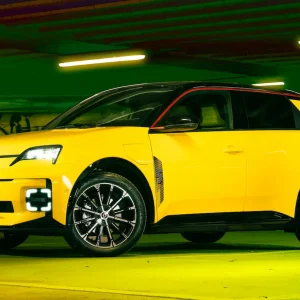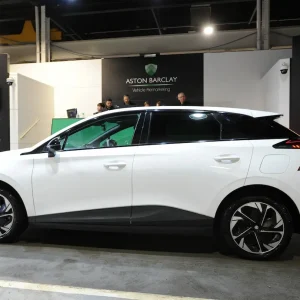Cars that can communicate with other vehicles used to be something you’d find in a movie. However, with the introduction of new fifth generation technology, this futuristic concept will soon become a reality.
The introduction of 5G in the automotive industry will be transformational. The new wireless technology facilitates real-time, in-vehicle tracking by providing fast and reliable connectivity.
This is a gamechanger for fleet management companies, who will be able to track their vehicles’ locations, speeds, and routes with minimal delay.
Real-time, real difference
Real-time tracking is invaluable for fleet managers as it enables them to monitor the whereabouts of their vehicles accurately, which means any emergencies can be promptly addressed and responded to and customers can receive specific delivery or servicing timeslots.
5G’s low latency and high bandwidth are essential for fleet managers to optimise routes and fuel usage effectively. With real-time data, they can make quick decisions to reroute vehicles and avoid traffic congestion or road closures.
More efficient working
By analysing the data which is transmitted over 5G networks, fleet managers can identify more fuel-efficient routes, optimise journeys by reducing idling times, and ultimately lower fuel costs for their business andincrease operational efficiency.
For fleet managers, the information they require will reach them quicker with 5G. Information from the cars on the road now is currently gathered by tracers. Details such as how many miles the car has got or where the vehicle is. The technology is there with 3G and 4G but 5G takes it to the next level of speed.
Identify possible training opportunities
Exact vehicle data also allows for the opportunity to observe driver behaviour more closely. 5G connectivity allows for continuous monitoring of how drivers perform, including their speed, acceleration, braking, and adherence to traffic rules.
This valuable insight allows fleet management systems to quickly identify any drivers who might need additional training or coaching to improve safety and efficiency.
This data-driven approach enhances driver safety and contributes to lower maintenance and insurance costs.
On the air updates
With the new 5G capabilities, drivers will not need to return a vehicle to a dealership for updates.
If a light comes up on the dashboard, or if there’s a software issue, the manufacturer can send the solution directly to the car using 5G.
For example, Tesla discovered an issue with its reversing camera and in the space of a month there was a fix that went to every car. It’s a much quicker, more efficient way of rolling out a solution.
A lot of electric vehicles have software updates on a monthly basis.
What the future holds
The BMW IX is the first car to offer 5G as standard and provides ultramodern connectivity in which a personal eSIM allows the car to become a 5G WLAN hotspot for up to ten devices inside the vehicle.
Soon all new cars will boast this, allowing the vehicles to respond much quicker and communicate with each other to avoid collisions and traffic jams – which is the next step towards fully autonomous driving.
I believe that the introduction of 5G will now pave the way for cars to eventually drive by themselves – a new futuristic concept. The flagship Tesla Model S now is only manufactured as left-hand drive. When they do go fully autonomous, you’ll sit in the driver’s seat but the car will drive itself.
Here and now, there is no doubt that 5G will enable fleet management companies to streamline their processes and work more efficiently.
The information they require will reach them quicker and gaining time can only be a positive.
Scott Norville is managing director of Silverstone Leasing.





